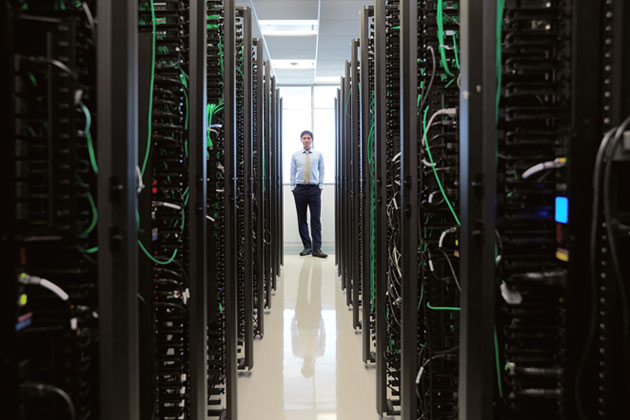Featured
Cisco gives pre-owned tech a Refresh
In a market of constant upgrades, Cisco Refresh aims to keep quality product away from landfills, writes BRYAN TURNER.
Share
- Click to share on Twitter (Opens in new window)
- Click to share on Facebook (Opens in new window)
- Click to share on LinkedIn (Opens in new window)
- Click to email a link to a friend (Opens in new window)
- Click to share on Reddit (Opens in new window)
- Click to share on WhatsApp (Opens in new window)
- Click to share on Pinterest (Opens in new window)
When one gets a new smartphone upgrade, the old device may be used as a backup or can be used by someone else. In business environments, equipment upgrades may not be conducive to keeping old equipment around, which may send older, working equipment to landfills.
This is where Cisco’s Refresh initiative comes in. At Cisco Connect in Sun City this week, Ehrika Gladden, VP and general manager of Cisco Refresh, lifted the lid on a little-known aspect of the company’s strategy.
“Refresh is Cisco’s global pre-owned equipment business unit,” said Gladden. “It is certified to meet the quality and engineering standards of Cisco. It is licensed for software and it’s also inclusive of a services warranty.
“Our responsibility in 80 countries around the world is tied to both the recovery of assets and the ability to leverage those assets at a lower price point. This ensures our sustainability and proper usage of the Earth’s resources while providing access to small and medium businesses. The products are typically in the range of 20-40% cheaper. The products represent the entire portfolio for Cisco in some part, the majority of that product set is 2+ years in terms of generation.”
Cisco’s Circular Economy initiative ensures a sustainable loop through businesses willing to pay a premium for the latest, cutting-edge solutions, while Cisco markets older, working equipment for resale to those who don’t require the latest solutions. This ensures far less new components need to be used in a product range.
“We are leveraging the model of remanufacturing, refurbishing, recycling, and reusing,” said Gladden. “Depending on the product set, there is a certain set of product yield that we expect. They vary from product to product, but we do have a percentage that doesn’t make it through.
“Those are always reused, meaning we will look at those products and decide to use them completely differently, leveraging the components, remanufacturing back into the overall build process. If that can’t be done, we will go into a recycle process where we melt those products down to reuse them.”
Repairing and refurbishing older products isn’t just that. Cisco is creating repair centres that are owned by third-parties to uplift local ownership.
“The repair centres, as a global manufacturer, is Cisco’s entree into local ownership,” said Gladden. “I want to be precise about what I mean by local ownership. It’s critical for us to have a localised presence, but doing that through ownership. When you look at inclusive economies, those that are participative, to be sustainable – not in the product set, but generationally.
“The ability as a global manufacturer through a local ownership model isto create a repair centre where a product can be returned, screened, tested, and repaired, leveraging the talent that the Networking Academy is creating.”
Cisco is working closely with local governments to understand where it operates and how to leverage the skills in the market.
Gladden said: “We are also super excited about the National Development Plan and African Union statements which with we align: eradication of poverty, job creation, ownership, healthcare, education, it all fits in the model. So we were very excited to have the opportunity to come to Africa first to announce this. Over the next twelve months, we want to establish our first repair centres, and in the next 3 to 5 years, build that vision into a reality.”
Share
- Click to share on Twitter (Opens in new window)
- Click to share on Facebook (Opens in new window)
- Click to share on LinkedIn (Opens in new window)
- Click to email a link to a friend (Opens in new window)
- Click to share on Reddit (Opens in new window)
- Click to share on WhatsApp (Opens in new window)
- Click to share on Pinterest (Opens in new window)
| Thank you for Signing Up |

















